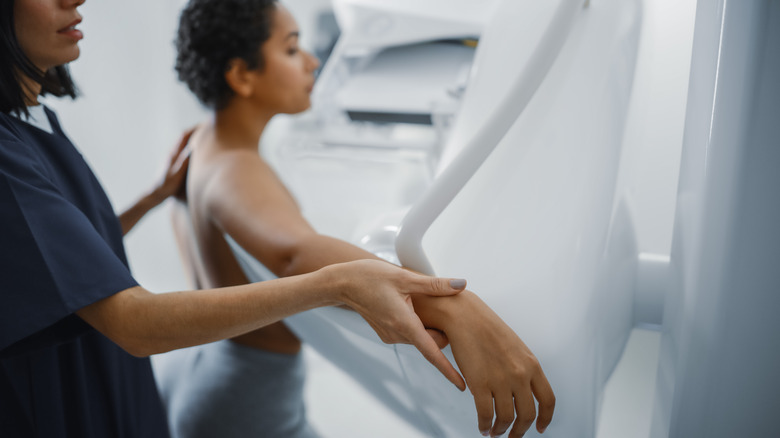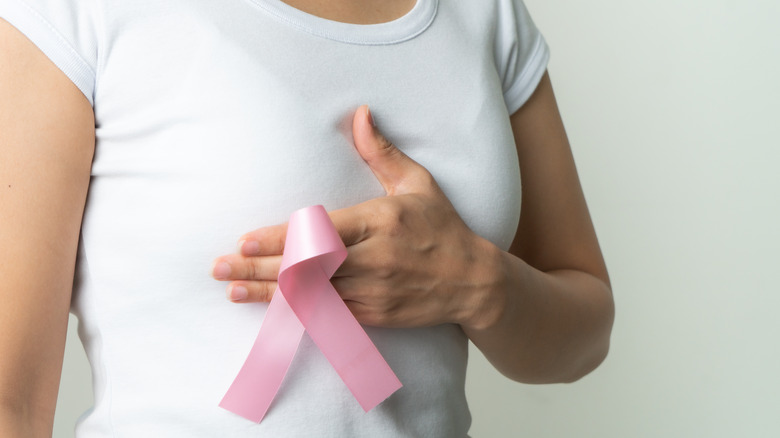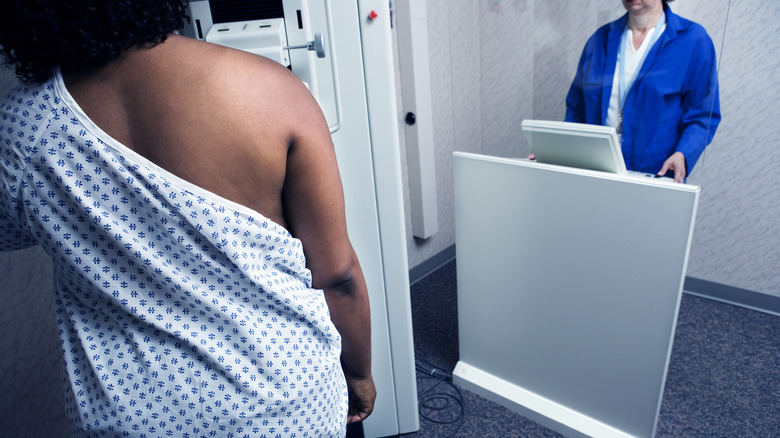How Often Do You Really Need To Get A Mammogram?
The American Cancer Society says breast cancer is one of the most common types of cancer in women, accounting for 30% of all new cancers found in women each year. Even if you actively try to stay away from the official statistics, you only have to get on YouTube to see content creators like Tess Christine and Bec from Eamon & Bec sharing their life updates about being diagnosed with breast cancer. Their journeys are both uplifting and challenging and they leave a sense of alarm in the minds of viewers.
Seeing other women deal with the disease makes us wonder about our own breast health: How old should we be to get our first mammogram? Are self-checks enough? Should we be worried if a distant relative of ours had breast cancer? How painful is a mammogram going to be? These are some possible questions that could flood your mind if you've never had a mammogram before.
If you've taken the plunge and gone for your first screening, you might be wondering how often you really need to continue the unpleasant exercise. Luckily, the experts have some answers that can shed light on all your queries.
Once a year is the general recommended frequency
While a strong history of breast cancer in the family and having a genetic mutation that puts you at risk of the disease can alter the frequency and age you start, the normal recommended number of times to do a mammogram is once a year, according to breast surgeon Dr. Sarah Cate of Mount Sinai Health System. "Patients at average risk should get annual mammography starting at age 40," she said. That recommendation was arrived at based on past accounts of saved lives and a general consensus among all major health organizations. Women are expected to continue screening till the age of 75, as put by board-certified OB/GYN and author Dr. Nita Landry to PureWow.
"Patients that have a strong family history of either breast or ovarian cancer should start getting mammography 10 years before the first relative that was diagnosed with breast cancer," added Cate. As for those genetically predisposed to the disease — meaning they have the BRCA1 and BRCA2 gene – the starting age is 30. The higher the risk, the earlier the screening and the more frequent it's going to be.
Meeting with your doctor and discussing family history would give you a more realistic number that's suited for you. "It's really important for each woman to talk to their healthcare provider about their health history, as well as the risks and benefits of screening, in order to determine the right age and method," Landry said.
What to expect at a mammogram
If you've ever heard about the account of their first mammogram from a friend, you know it's going to be unpleasant, but more often than not, the experience is not as bad as people assume, at least according to Landry (via PureWow). Wearing comfy clothes to your mammogram appointment is a great first step. It's also a good idea to avoid lotions, deodorant, and spritzing any scented products on yourself before your appointment.
Once you're there, expect to be at the office for less than half an hour because the procedure really is quick. You have an option between 2D and 3D mammograms, added Landry. "From a patient perspective, the experience of getting a 2D or 3D mammogram is very similar; both require compression of the breast. However, since 3D mammograms provide more detailed images, they decrease your chance of a false positive. In addition, they modestly increase the detection of breast cancer," she shared with PureWow.
Your breasts go through a lot of changes over the age of 40 due to hormonal changes, so doing the yearly screening is a great way to keep on top of things. How often you get your mammogram also helps when it comes to detecting the disease early, which will eventually aid in how effectively it's treated.


